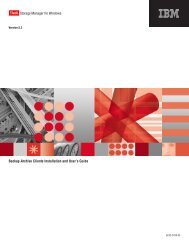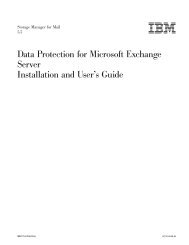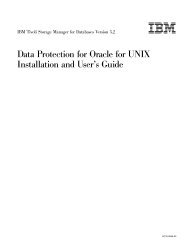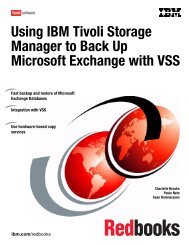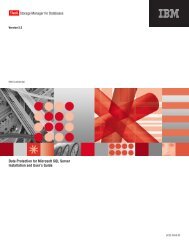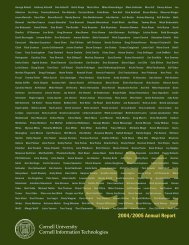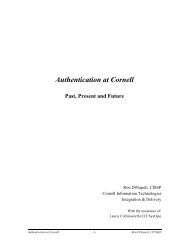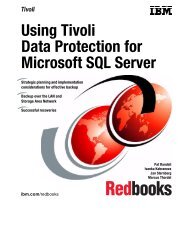Backing Up Oracle - Computing at Cornell
Backing Up Oracle - Computing at Cornell
Backing Up Oracle - Computing at Cornell
You also want an ePaper? Increase the reach of your titles
YUMPU automatically turns print PDFs into web optimized ePapers that Google loves.
- The value of the compression option for TDP for <strong>Oracle</strong> is honored only<br />
if the TSM administr<strong>at</strong>or leaves the compression decision to the node.<br />
The TSM administr<strong>at</strong>or can restrict use of the compression option by<br />
specifying certain restrictions on the TSM server side.<br />
TRACEFLAGS TRACEFILE<br />
- Once your TDP for <strong>Oracle</strong> is set up correctly, it should not be<br />
necessary to run tracing, which may produce large trace files, but<br />
during performance analysis these may be useful. Once testing is<br />
finished, be sure to remove all trace settings in the dsm.opt file, as<br />
these may themselves cause a performance overhead.<br />
D.1.2 RMAN performance options<br />
These are some performance consider<strong>at</strong>ions rel<strong>at</strong>ing to RMAN options:<br />
D.1.2.1 Alloc<strong>at</strong>ing multiple channels<br />
When backing up <strong>Oracle</strong> d<strong>at</strong>a, RMAN sends the d<strong>at</strong>a through a channel to a<br />
server session and finally to TSM. Using multiple channels in one backup or<br />
restore oper<strong>at</strong>ion may increase performance.<br />
D.1.2.2 RMAN backup with the diskr<strong>at</strong>io option<br />
The diskr<strong>at</strong>io option directs RMAN to assign d<strong>at</strong>afiles (only) to each backup<br />
set and spread them across the specified number of drives.<br />
For example, assume th<strong>at</strong> you use 10 disks, the disks supply d<strong>at</strong>a <strong>at</strong> 10<br />
bytes/second, and the tape drive requires 50 bytes/second to keep<br />
streaming. You can set diskr<strong>at</strong>io 5 to spread the backup load across 5 disks<br />
for each backup set. If you set filesperset but not diskr<strong>at</strong>io, then diskr<strong>at</strong>io<br />
defaults to the same value as filesperset. If you specify neither parameter,<br />
diskr<strong>at</strong>io defaults to 4.<br />
RMAN compares the diskr<strong>at</strong>io value to the actual number of devices<br />
involved in the backup and uses the lowest value. For example, if diskr<strong>at</strong>io<br />
is 4 and the d<strong>at</strong>afiles are on 3 disks, then RMAN <strong>at</strong>tempts to spread the<br />
backup load for each set among 3 disks. The diskr<strong>at</strong>io parameter is easier<br />
to use for d<strong>at</strong>afile backups when your d<strong>at</strong>afiles are striped, or they reside on<br />
separ<strong>at</strong>e disk spindles, and you do either of the following:<br />
Use a high-bandwidth tape drive th<strong>at</strong> requires several d<strong>at</strong>afiles to be<br />
multiplexed in order to keep the tape drive streaming.<br />
Make backups while the d<strong>at</strong>abase is open and you want to spread the I/O<br />
load across several disk spindles in order to leave bandwidth for online<br />
oper<strong>at</strong>ions.<br />
224 <strong>Backing</strong> <strong>Up</strong> <strong>Oracle</strong> using Tivoli Storage Management



